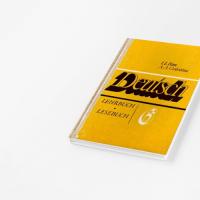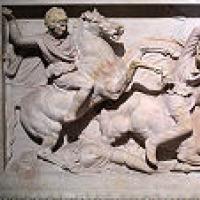Download the presentation by April 12. Class hour "April 12 - Cosmonautics Day". Eleventh Competition. Running with the ball behind
April 12 Cosmonautics Day Kravtsun M.G. primary school teacher MBOU ESOSH No. 1 village Egorlykskaya Rostov region
On one of the spring days 53 years ago, an unusual event for those times took place: on April 12, 1961, Yuri Alekseevich Gagarin made the first space flight in the history of the Earth on the Vostok spacecraft. Since then, every year on April 12, our country celebrates Cosmonautics Day. This is a holiday for cosmonauts, scientists, engineers, workers who invent and make rockets, spacecraft and satellites.
People have long dreamed of exploring outer space. They thought for a long time about how to build a spaceship to fly above the stars. People dreamed of knowing the sky, and not just setting altitude records. New thousands of inventive minds and new hundreds of thousands of skillful, talented hands joined the common work... And so they created spaceships and flew into space. But before the famous cosmonaut Yuri Alekseevich Gagarin flew
On November 3, 1957, a living heart began to beat in the lifeless, cold, always black space of space. In the hermetic cabin of the satellite, the dog Laika lived, breathed, and flew over the world.
Following Laika, Belka and Strelka followed. Guinea pigs, monkeys, parrots, mice, rabbits also flew - all of them honestly served a great dream.
Yuri Alekseyevich Gagarin
Our hero was born on March 9, 1934 in the village of Klushino (now the Smolensk region). By origin, he is a peasant. His mother Anna Timofeevna and father Alexei Ivanovich were simple workers of their time. The childhood of the future cosmonaut passed in his native village, where he went to school, where he had to suspend his studies in 1941 due to the German occupation. Two years later, in 1943, school attendance resumed. In May 1945, Yura and his family moved to the city of Gzhatsk, where in May 1949 he graduated from the sixth grade of high school. After school, he entered the Lyubertsy vocational school and at the same time the school of working youth. Yura graduated from college with honors. In 1951, Gagarin entered the Saratov Industrial College, and in October 1954 for the first time he came to the Saratov flying club. In 1955, he successfully completed his studies and made his first flight on a Yak-18 aircraft. He served in the army, which began in 1955, in the city of Chkalov (now Orenburg), in the 1st Military Aviation Pilot School named after K. E. Voroshilov. Despite the difficulties during his studies, Yura graduated from college with honors. Then for two years he served near Murmansk in the 169th Fighter Aviation Regiment of the 122nd Fighter Aviation Division of the Northern Fleet, armed with aircraft. On December 9, 1959, Gagarin wrote a statement in which he asked to be admitted as a candidate cosmonaut. And a week later he was called to Moscow to undergo a medical examination. He was qualified! And on March 3, 1960, he was enlisted as a candidate cosmonaut. Since that time, regular training began.
What should an astronaut be like? Bold, determined, collected. And his health must be very strong: after all, during takeoff and landing, the astronaut experiences the strongest overloads. And in space, he will be in a state of weightlessness - the test is not easy. In order to determine whether astronaut candidates meet all the necessary requirements, they are examined for a long time and carefully by a medical commission. They even conduct such an experiment: they put a person in a special centrifuge, and for some time he rotates in it. If the body copes with this task, it means that a person will feel normal in space. And after long tests and discussions, a decision was made: Yuri Alekseevich Gagarin would become the first cosmonaut in the world. Finally the decisive day arrived. April 12, 1961 Yuri Gagarin on the spacecraft "Vostok" made a space flight. In 108 minutes, the satellite with the world's first cosmonaut circled the globe and safely returned to Earth. It was a powerful breakthrough in space exploration! And then there was a solemn meeting on Red Square. In a few hours, Yuri Gagarin became the most famous person in the world. When the government announcement of the great flight was heard on the radio, the streets of the whole country filled with crowds of people. Everyone wanted to greet the world's first cosmonaut, the Son of the Earth, the Citizen of the Universe.
But space isn't just for men.
Valentina Vladimirovna Tereshkova (1937) - cosmonaut, the first woman to travel in space. She was born on March 6, 1937 in a small village in the Yaroslavl region. Education in the biography of Valentina Tereshkova began in 1945 at the Yaroslavl school. After seven years of school, she began working at a factory, and at the same time she studied at an evening school. The next educational step in Tereshkova's biography was the technical school of light industry. Simultaneously with her studies there, Valentina worked at a textile factory. In 1962, she became one of the contenders for the candidacy of the first woman to go into space. She went through a lot of training - parachuting, weightlessness, resistance to flight. On June 16, 1963, on the Vostok-6 spacecraft, Tereshkova made the world's first space flight by a female cosmonaut, spending almost three days in orbit. Valentina hid her preparations for the flight from her relatives so as not to disturb them. On the day of the first flight into space, she said that she was leaving for the skydiving competition, they learned about the news on the radio. Since 1966, he has been active in state activities. She was a people's deputy of the USSR, chairman of many Presidiums. Since 1963 he has been an Honored Master of Parachuting. The chronology of military ranks in the biography of Valentina Tereshkova is as follows: lieutenant, captain - 1963, major - 1965, lieutenant colonel - 1967, colonel - 1970, major general - 1995. She retired in 1997. She has many awards, orders, medals.
He is the first cosmonaut in the world, Because he is a hero for everyone. He was the kindest person, He was with an unearthly smile. That's why this holiday has become kind for the kids, Because, you see, about space Everyone thought in childhood: They look like Gagarin All the boys want to be, In honor of him, children draw A multi-colored starfall. In honor of Gagarin - avenues, Ships and boats ... Now the holiday of astronauts: Cosmonautics - "Hurrah!". Cosmonauts Day Both boys and girls, Waking up and in good dreams, Everyone dreams about space, About distant skies. Today is the holiday of astronauts! - Congratulations on this day. Gagarin opened it to us. Much has been said about him.
slide 2
Cosmonautics is the process of exploring outer space with the help of automatic as well as manned spacecraft. This term was proposed by G. E. Langemak, who is one of the pioneers of Soviet rocket technology.
slide 3
On April 12, all of Russia celebrates Cosmonautics Day - the day of the launch of the Vostok spacecraft into low Earth orbit with the first cosmonaut Yuri Gagarin on board.
slide 4
On April 12, 1961, at 9:07 Moscow time, Yuri Alekseevich Gagarin launched from the Baikonur Cosmodrome, making the first space flight in the history of mankind on the Vostok satellite ship. Everyone remembers Gagarin's now catchy phrase: "Let's go!", which he uttered when he boarded the ship.
slide 5
The flight took place in near-Earth orbit at altitudes of 181-327 kilometers. In 108 minutes, the satellite with the world's first cosmonaut circled the globe and safely returned to Earth near the village of Smelovka, Ternovsky district, Saratov region.
slide 6
The orbital flight by Yuri Alekseevich Gagarin on the Vostok 1 spacecraft was a powerful breakthrough in space exploration. By decision of the International Aviation Sports Federation since 1968, April 12 is celebrated as the World Day of Aviation and Cosmonautics.
Slide 7
GAGARIN Yuri Alekseevich (1934-1968) USSR cosmonaut, colonel, Hero of the Soviet Union, USSR pilot-cosmonaut The first person to fly into space. Born in the family of a collective farmer in the city of Gzhatsk, Smolensk region. In 1941 he began to study at a secondary school, but his studies were interrupted by the war. After the end of the war, the Gagarin family moved to Gzhatsk, where Gagarin continued to study. In 1951 he graduated with honors from a vocational school in the suburbs.
Slide 8
Gagarin was awarded the gold medal to them. K. E. Tsiolkovsky, de Lavo medal, gold medals and honorary diplomas of the international association "Man in Space" and the Italian Association of Cosmonautics, gold medal "For Outstanding Distinction" and an honorary diploma of the Royal Aero Club of Sweden, Large gold medal and diploma of the FAI, gold medal of the British Society for Interplanetary Communications, Galaber Prize for Astronautics. Since 1966 Gagarin was an honorary member of the International Academy of Astronautics. He was awarded the Order of Lenin and medals of the USSR, as well as orders from many countries of the world. He was awarded the title Hero of Labor
Slide 9
Gagarin died tragically in a plane crash near the village of Novoselove, Vladimir Region, while performing a training flight on an airplane (together with pilot Seregin). In order to perpetuate the memory of Gagarin, the city of Gzhatsk was renamed the city of Gagarin. Gagarin's name was given to the Air Force Academy (VVA).
Slide 10
Yuri Gagarin
He remained in the memory of his comrades in the first set of cosmonauts and everyone with whom he worked as a simple, accessible, wonderful person. And his sunny smile has been illuminating the way to the stars for mankind for almost half a century, since the day of the first space flight.
slide 11
On April 12, 1961, Yu. A. Gagarin made the first space flight in the history of mankind on the Vostok spacecraft. For 1 hour 48 minutes, it circled the globe and landed safely in the vicinity of the village of Smelovka, Saratov Region. After the flight, Gagarin continuously improved his skills as a pilot-cosmonaut, and also took a direct part in the education and training of cosmonaut crews. With the mission of peace and friendship, he visited many countries.
slide 12
In order to equip the eye and be friends with the stars, to see the Milky Way so that a powerful one is needed ...
slide 13
They have been studying the life of planets with a telescope for hundreds of years. A smart uncle will tell us about everything ...
Slide 14
An astronomer - he is an astrologer, He knows everything! Only better stars are visible In the sky full ...
slide 15
A bird cannot fly to the moon and land on the moon, But it knows how to do it fast ...
slide 16
The rocket has a driver, an amateur of weightlessness. In English: "astronaut", And in Russian ...
Slide 17
An astronaut is sitting in a rocket, Cursing everything in the world - In orbit, as luck would have it, Appeared ...
Slide 18
A UFO flies to a neighbor From the constellation Andromeda, In it, out of boredom, a wolf howls An angry green ...
April 12, 1961 year in our country launched the first spacecraft. Gagarin Yury Alekseevich became the first space pilot who opened the expanses of the universe. It is for this reason that we celebrate the date of the great discovery.



Venus Mars Earth Moon
Saturn Jupiter Uranus Sun
Mercury Pluto Neptune

S.P. Korolev
Sergei Pavlovich Korolev is a scientist who worked in the field of rocket and rocket and space technology. S.P. Korolev- an outstanding designer.
He is rightfully the father of domestic rocket and space technology, which ensured strategic parity and made our state an advanced rocket and space power.

Who was the first to fly into space?
The dog Laika was the first to fly into space. She spent several days aboard the artificial satellite, but they could not return her to Earth. In August 1960, the dogs Belka and Strelka set out on a space journey. There were also mice, insects and seeds on the ship. After the flight, the animals returned to their home planet and felt great.
Astronaut dogs: Zvezdochka, Chernushka, Strelka and Belka (photo 1961).

Dear friends, relatives and strangers, compatriots, people of all countries and continents! In a few minutes, a mighty spaceship will take me to the distant expanses of the universe.
The first orbit around the Earth of a spacecraft with a man on board was the merit of many, many people and, first of all, the general designer of spacecraft
Sergei Pavlovich Korolev.



First human spacewalk
On March 8-19, 1965, Alexei Arkhipovich Leonov, together with P.I. Belyaev flew on the spacecraft "Voskhod-2" as a 2nd pilot. On March 18, 1965, Leonov first went into outer space, retired from the spacecraft at a distance of 5 m and spent 12 minutes in open space outside the airlock. 9 p.

First female astronaut Valentina Tereshkova
On June 16–19, 1963, she made a space flight as a pilot of the Vostok-6 spacecraft, lasting 2 days and 23 hours. It was the first flight of a female astronaut in the world.


ISS - International Space Station
The International Space Station is the largest space object among all that have been made by human hands. If the station is inscribed in a rectangle, then this rectangle will exceed the area of a football field. Although, of course, only a small part of this rectangle will be filled with compartments where people live. The station is so huge that it was impossible to launch it into space entirely at one time.


Baikonur Cosmodrome named after S.P. Queen

Management of the docking of the Russian transport manned spacecraft "Soyuz TMA-12" with the International Space Station.


We live on the Earth.
EARTH, the third largest planet from the Sun in the solar system. The surface area of the Earth is 510.073 million km2, of which approximately 70.8% is in the World Ocean. Land makes up 29.2%, respectively, and forms six continents and islands. Mountains occupy more than 1/3 of the land surface. Deserts cover about 20% of the land surface, savannas and light forests - about 20%, forests - about 30%, glaciers - over 10%.


Take care of our planet earth.
You may wonder Having learned - the Earth is our common home! Animals, birds live in it And we live with you. The earth is our huge house, It has many floors. For underwater dwellers And for forest snakes. Enough for all apartments: For buffaloes and goats, For owls and crocodiles For hares and dragonflies. The earth is our huge house, And let it be built It is not made of concrete slabs, But that's not the point at all. And the fact that we are neighbors, And we must save Deer and bears. This is what we're talking about!
Take care of your planet! There is one garden planet. In this cold space Only here the forests are noisy, Birds calling migratory. And dragonflies are only here They look into the river in surprise. Take care of your planet After all, there is no other in the world!



Konstantin Eduardovich Tsiolkovsky
1857-1935,
Russian and Soviet self-taught scientist,
researcher, school teacher.
Founder of modern astronautics.
Substantiated the derivation of the equation of jet propulsion,
came to the conclusion that it was necessary to use "rocket trains"
- prototypes of multi-stage rockets.
Konstantin
Eduardovich
Tsiolkovsky


Sergei Pavlovich Korolev
1906 -1966,
Soviet scientist, designer and organizer of the production of rocket and space technology and rocket weapons. Founder of practical astronautics.
The largest figure of the 20th century in the field of space rocket and shipbuilding, together with the German designer Wernher von Braun. With the launch of the first artificial Earth satellite in 1957, he marked the beginning of a new era in the history of mankind, the space age.
Korolev
Sergey
Pavlovich

Yuri Gagarin
the first cosmonaut of the planet.

Yuri Alekseyevich Gagarin
1934-1968
Soviet cosmonaut,
The hero of the USSR,
colonel, first man,
spaceflight

Leonov
Alexei
Arkhipovich
soviet cosmonaut,
first man,
spacewalker .

Tereshkova
Valentine
Vladimirovna
the first female cosmonaut of the Earth,
The hero of the USSR,
major general.



first space tourist
paying for your flight
into space in 2001




